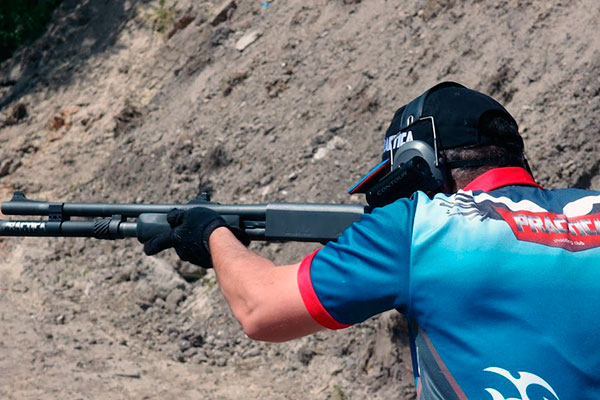Proper Trigger Pull
Proper Trigger Pull

Vitaly Pedchenko, Shotgun Instructor
You can have your sights lined up perfectly, then jerk the trigger, and of course miss the mark. Trigger manipulation is something you must work on for better control. Your sights may be perfectly zeroed and you have sandbag supports but if you jerk the trigger, you will miss. You can pull to the left or right, fire high and fire low with poor trigger control. An excellent way to practice your trigger pull is by using snap caps, which are cartridges without primer or shot that allow you to dry fire without damaging the firing pin.
Use the snap caps to know how much slack is in the trigger. New shooters get impatience when they depress the trigger slightly and nothing happens, and then they jerk the trigger to get a response. Many have said that the shot should be a surprise. It should not be a surprise if you practice and know how much slack you have. Steady pressure and over time it begins to feel like the weapon fired on its own. You can fire more quickly without jerking but for practice sake take it slow and feel the slack being taken up.
You may have to fire quickly in any number of situation but it does not mean you jerk to make it fire faster. Simply apply steady pressure faster. Your trigger finger has a joint at the end, one in the middle and one where it meets the palm, which means the end of the finger can move independently from the rest of the finger. Some shooters’ trigger placement is past the first joint meaning just flexing the tip will not fire the weapon. To pull the trigger with two joints of the finger over the trigger essentially means you are moving more than just the trigger finger to pull. This is not control, you cannot feel the slack and really cannot feel how much pressure you are bringing to bear and will end up jerking the trigger. Just use the tip where all you have to do is flex the joint without moving the whole hand or finger; this will give you greater control.
Take the time to observe your fellow shooters on a range sometime and you may notice the entire hand moves when some shooters pull the trigger. The more mechanics you employ to depress the trigger means less control. It is not the weapons’ sight but your trigger pull many times that causes you to miss.
Experienced shooters find the spot on their fingertip for the best pull, which is usually on the side of the finger where there is limited cushion and more sensitivity.
Your index finger needs the thumb for most jobs, so when the trigger finger has a job to do the thumb wants in on it. It can be difficult sometime to isolate the two because the opposable thumb is needed to pick up coins for example, or to grasp items tightly. This is called sympathetic movement, when one moves the other tries to move as well. You must keep the thumb from moving by having a tighter grip where the thumb makes contact with the weapon.
Related Post:

